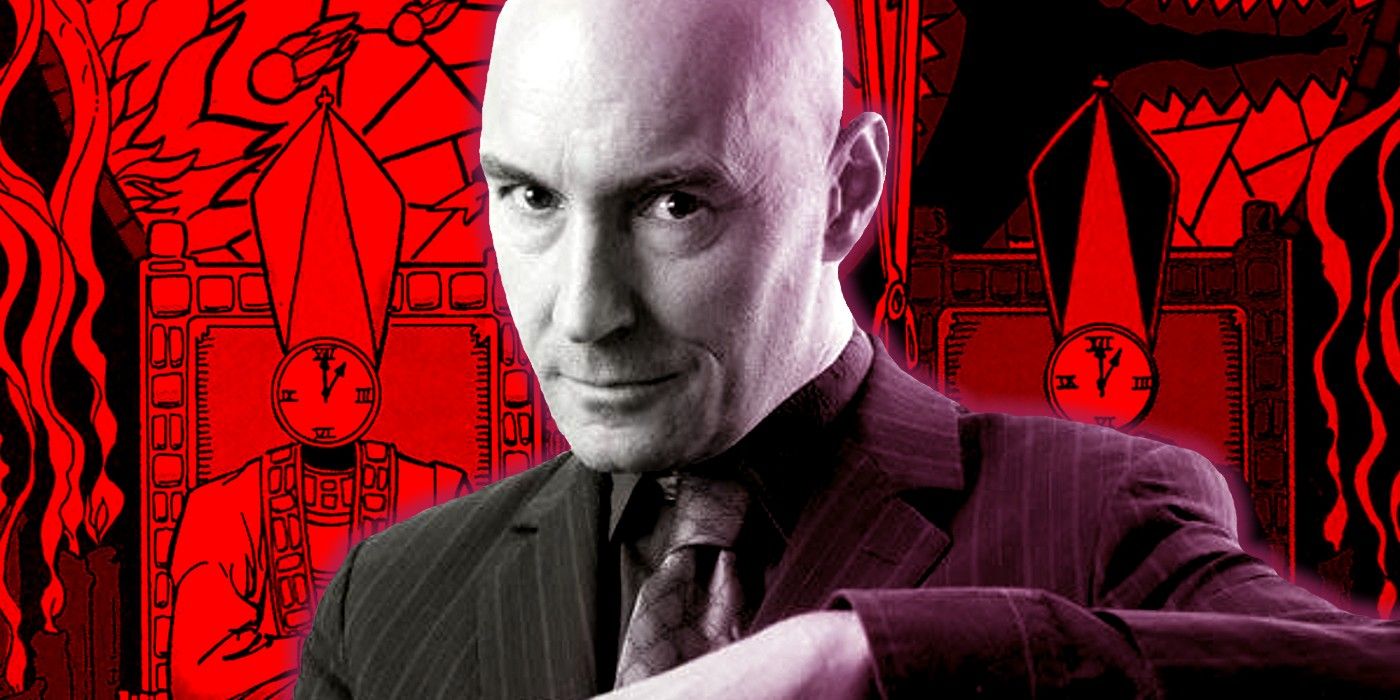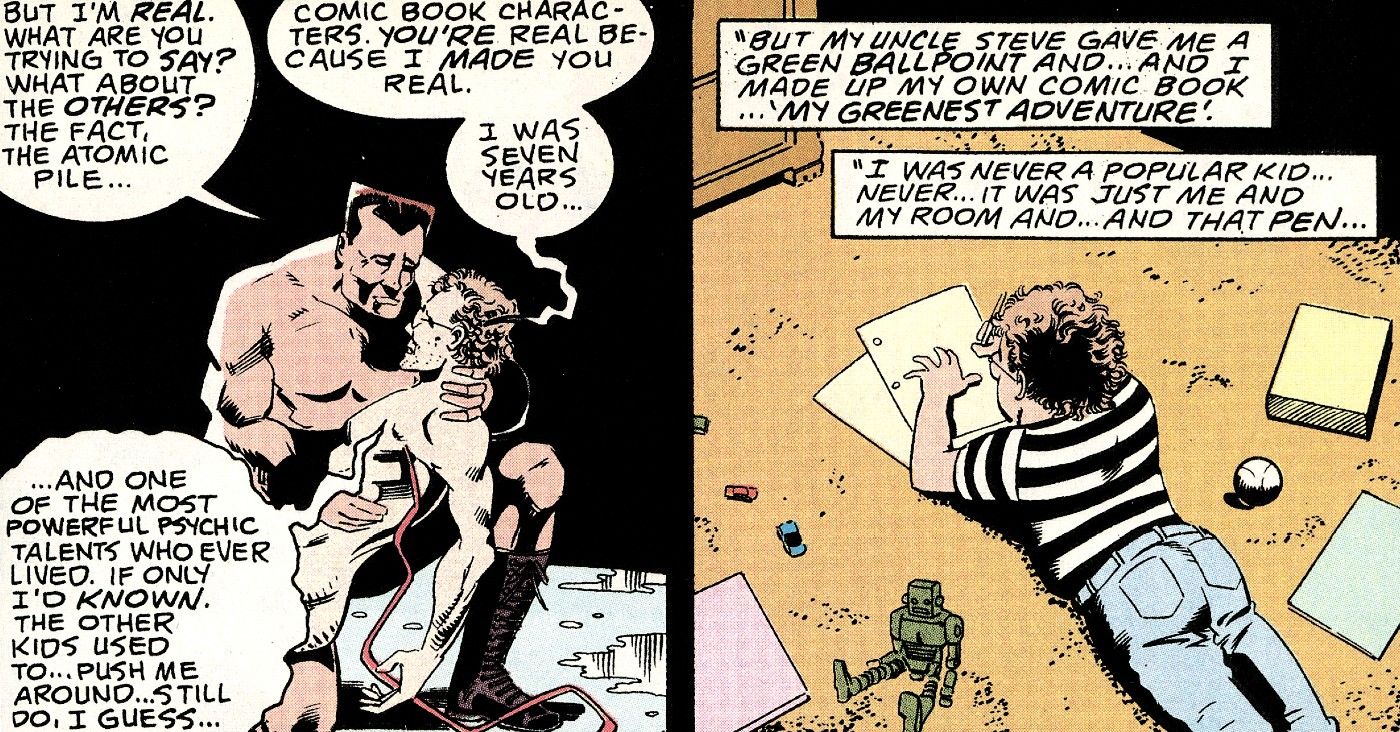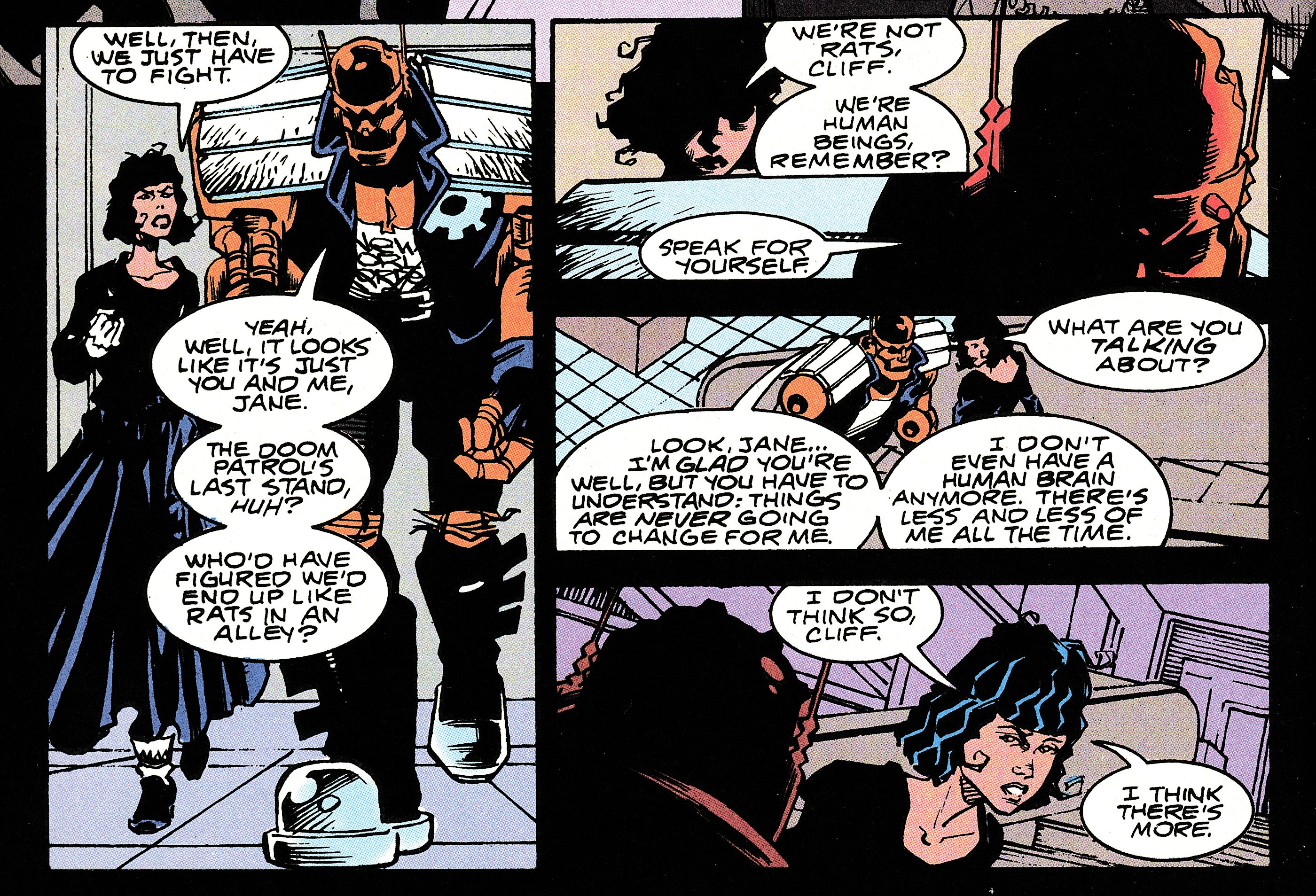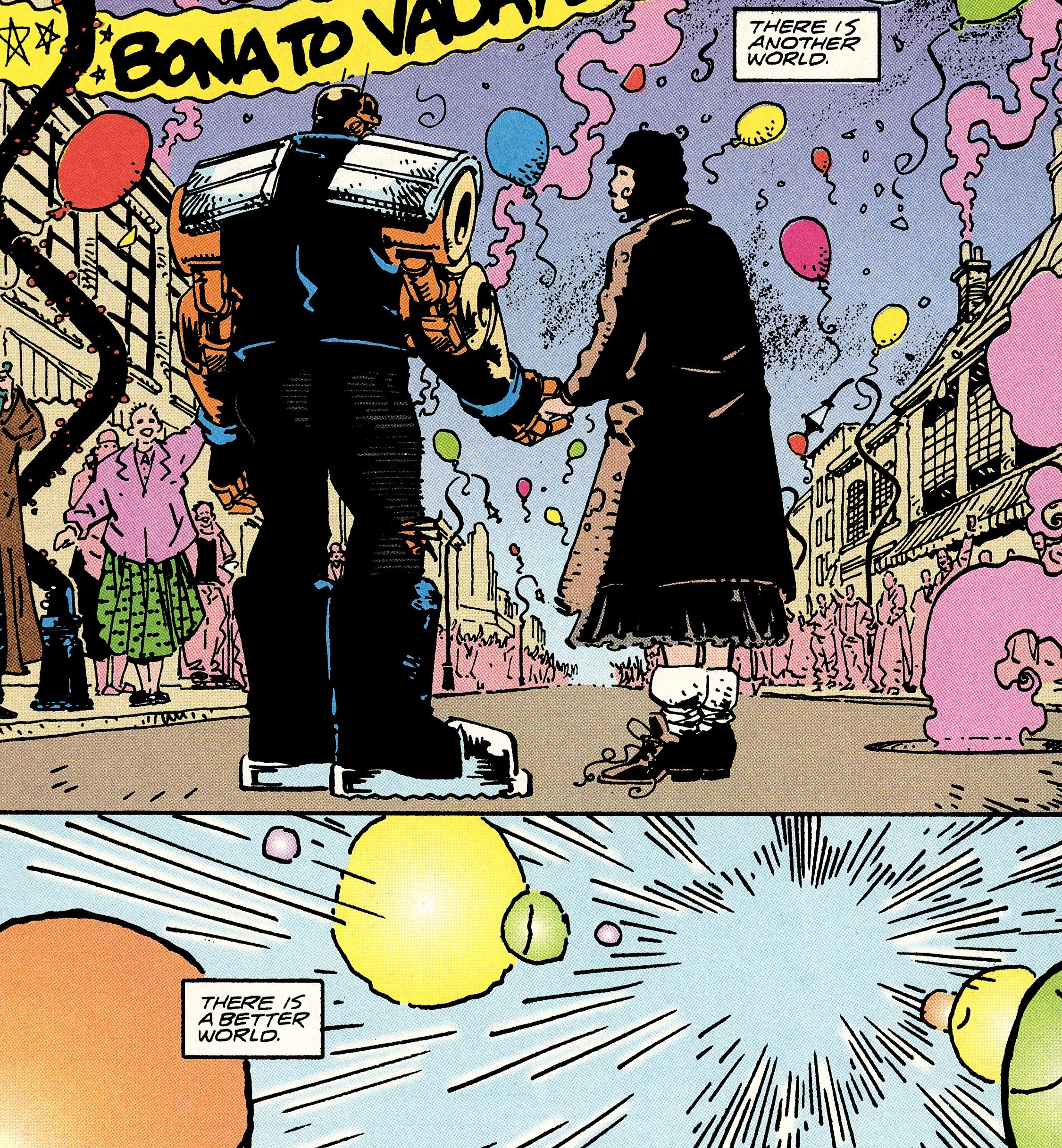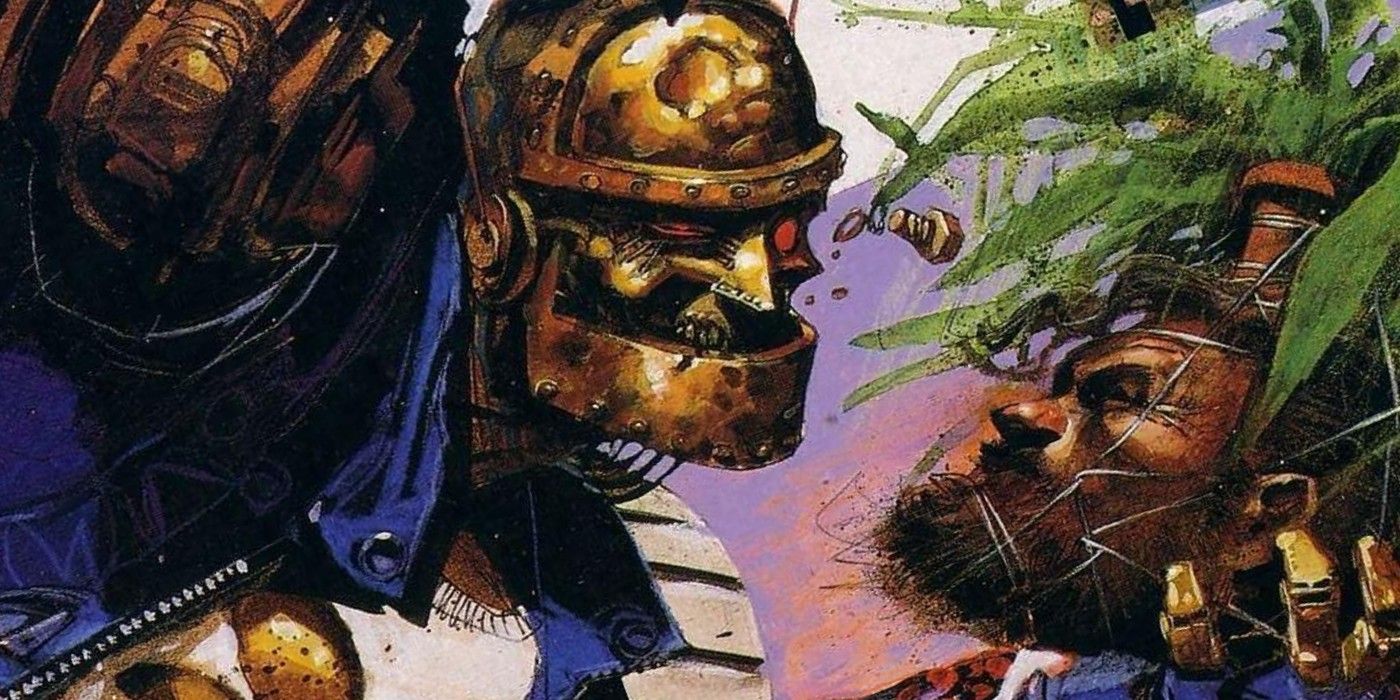Most comic book fans are familiar with the works of Grant Morrison, but when discussing their iconic runs on titles such as Animal Man, Batman, and The Invisibles, their run on Doom Patrol is sometimes forgotten. One of the first titles to be rebranded with the Vertigo imprint, Morrison's Doom Patrol is a hidden gem of the strange and uncanny. After lagging sales, Morrison took over writing from Paul Kupperburg in Doom Patrol #19, and effectively rebooted the series with Richard Case on art duties. Right out of the gate, Morrison's vision for Doom Patrol was something wholly original that would bring a level of occult absurdity to comics that has rarely been matched since.
It's no secret that Grant Morrison is a Chaos Magician, and their magical ideas saturate the stories they write. Morrison's occult philosophy combined with their experimental writing techniques were a perfect fit for a team that was originally supposed to be called the Legion of the Strange. A list of the occult references found within the pages of Doom Patrol would fill several articles, with quotes and references to Chaos Magician Peter J. Carrol, 20th-century occult magician Austin Osman Spare, avante-garde voodoo filmmaker Maya Deren, and others. There are also many characters who directly embody occult ideas, such as Rebis, Mr. Evans, Morrison's version of Jack the Ripper: Red Jack, and others. More than just referential, Morrison's Doom Patrol is founded on occult ideas, giving readers effortless reference for otherwise complex concepts.
Flex Mentallo and Tulpas
Core to much of Morrison's writing, a tulpa or thought-form is a living idea - a concept created by a person, but one which then exists parallel to their own mental processes, effectively enjoying independence from the mind of the person who thought it up.
The ideology behind tulpas manifests itself in two Doom Patrol characters, Dorothy Spinner and Flex Mentallo. Dorothy is a little ape-faced girl with the ability to manifest creatures from her imagination into the real world. Dorothy's journey throughout Morrison's run involves overcoming her inability to control the thought-forms that come from her mind, with one of them almost destroying the world. Flex Mentallo, on the other hand, is a tulpa himself, having originated as a comic book character created by a powerful psychic, whose belief in Mentallo caused him to gain sentience and leap from the comic page into the real world. The explanation of what tulpas are is straightforward enough, and as with Flex Mentallo, Morrison hints that comic book characters could indeed exist meaningfully as independent beings. In an interview with Sequential Tart, Morrison mused:
I believe utterly in the 'reality' of fictional characters and assume that they all exist independently of my imagination with needs and requirements of their own, like Buddhist tulpa thoughtforms. I've always felt that my best writing is more like channeling the voices and adventures of real characters doing this stuff in a real place — the comic as it exists in the future perhaps.
Robotman and Plato's Theory of Forms
In Plato's theory of Forms, the philosopher imagines a higher realm of reality where concepts exist in a purer, more absolute state. This means that the perception of the world held by human beings is not things as they "truly" are. All apples are different, but the image a person pictures in their head when an apple is mentioned is the true form or "essence" of the apple, and it exists in an idea-realm that contains the archetype of everything in existence. Plato goes on to theorize that every individual person has an essence, which is the very core of who they are.
While referenced throughout the series, Plato's theory of Forms is a concept particularly relevant to the story of Cliff Steele, AKA Robotman, whose body is destroyed in an accident, requiring his brain to be housed in a robot body. In one of Doom Patrol's creepiest moments, the Candlemaker destroys Cliff's brain as his body is frozen and unable to protect itself. Cliff is only able to survive because his consciousness was uploaded into a computer, which is then uploaded back into his robot body. No part of Cliff's original body remains, but his consciousness, or "essence," lives on. Despite this, and Cliff's own doubts about his humanity, the reader is encouraged to understand that in every way that matters, this is still Cliff.
Danny the Street's Gnosticism and Realms of Being
The Gnostic theory of planes of existence, with the familiar world existing in tandem with other realities in layers separated by perception, is at the very core of Morrison's Doom Patrol. Some theorize that through meditation, humans can enter a parallel existence that exists on a higher vibrational plane, with some beliefs saying that when you die, you enter these higher or lower dimensions with the highest being some state of Nirvana. Near the end of Morrison's run, Danny the Street reveals they are actually a remnant of a beautiful, dream-like reality where everyone is accepted, and life is full of joy and adventure. They reveal they are a portal to that world, and that they are not merely Danny the Street, but Danny the World. In an interview with Mondo 2000, Morrison says:
The Gnostic narrative is still valuable and relevant because it concerns itself with... the idea that we live in a simulation of reality that enfolds and engages us while blinding us and concealing from us the true reality of our existence... From my point of view, our universe was very definitely contained inside a bigger, more “real” continuum with more dimensions but it wasn’t like we were a simulation. The universe was created naturally as part of an organic process but there was no doubt that our lives were just small slices of something with more angles.
In Doom Patrol #60, the Candlemaker sends Crazy Jane to hell. It's revealed in Doom Patrol #63 (Morrison's final issue) that the hell Crazy Jane is sent to is in fact the reader's reality, which exists on a lower vibrational frequency. In this reality, Jane is medicated and in an asylum, where her adventures with the Doom Patrol are treated as conditions of insanity. Jane receives electroshock therapy, which puts her into a muted state, "curing" her. She lives out a drudgery of an existence until she is saved by Robot-Man, who brings her into Danny's world. The suggestion, of course, is that anyone in the "real" world can experience a similar ascension.
Doom Patrol's Love of the Weird
In the strangeness and magic of Grant Morrison's Doom Patrol, there is a central theme that is hammered home in its ending. There are people in the world whose goal is to enforce "normality" onto society, and the "normality" of these institutions depends on killing dreams, quirks, and magic. These forces want people to lose hope and merely exist. Doom Patrol isn't just a commentary on occult philosophy, but an exhortation to resist the strictures of modern life by employing it in relatable ways. In the Mondo 2000 interview, Morrison states:
Magic encourages you to take charge of your own life, so it confers a sense of agency and self-control that can seem lacking at times like these when sort of epic, elemental forces seem to have us all at their mercy. Given the options, who wouldn’t prefer to be rampaging around in higher planes, interacting with eternal archetypes and pop culture gods? Who wouldn’t want to bring back ideas that could change the world?
Grant Morrison has spent a large part of their life researching the occult and practicing magic, and there is not a single piece of Morrison's work that does not contain a spark of that knowledge and belief, but Doom Patrol was arguably the first work in which Morrison was able to remove the guide rails and let their intuition and psyche go wild on the page. Reading Grant Morrison's Doom Patrol is not only a reflection on these ideas, but an invitation to try them out for oneself.
Sources: Sequential Tart, Mondo 2000

